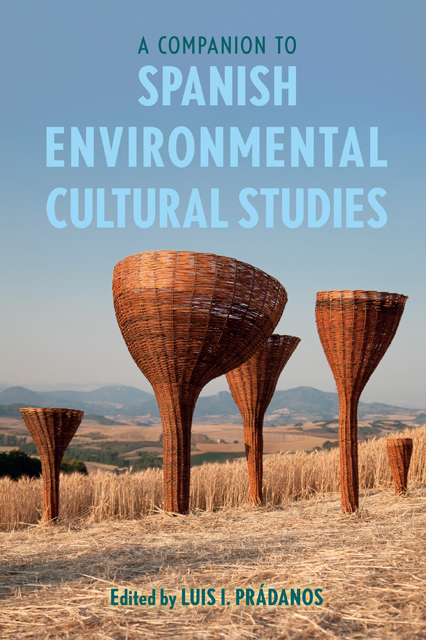Book contents
- Frontmatter
- Contents
- List of Illustrations
- List of Contributors
- Note on the Translations
- Acknowledgements
- Introduction: Spanish Environmental Cultural Studies
- Part I Environmental Cultural History and Political Ecology
- Part II Water and Power
- Part III Ecologies of Memory and Extractivism
- Part IV Animal Studies and Multispecies Ethnographies
- Part V Food Studies and Exploitative Ecologies
- Part VI Ecofeminism
- Part VII (Neo)Colonial and Racialized Ecologies
- Part VIII Tourism and the Environmental Imagination
- Part IX Eco-Mediation and Representation
- Part X Trash and Discard Studies
- Bibliography
- Index
3 - Roots Under the Water: Dams, Displacement, and Memory in Franco’s Spain (1950–1967)
Published online by Cambridge University Press: 08 June 2023
- Frontmatter
- Contents
- List of Illustrations
- List of Contributors
- Note on the Translations
- Acknowledgements
- Introduction: Spanish Environmental Cultural Studies
- Part I Environmental Cultural History and Political Ecology
- Part II Water and Power
- Part III Ecologies of Memory and Extractivism
- Part IV Animal Studies and Multispecies Ethnographies
- Part V Food Studies and Exploitative Ecologies
- Part VI Ecofeminism
- Part VII (Neo)Colonial and Racialized Ecologies
- Part VIII Tourism and the Environmental Imagination
- Part IX Eco-Mediation and Representation
- Part X Trash and Discard Studies
- Bibliography
- Index
Summary
With more than 1,200 reservoirs and dams, Spain is the first country in Europe and the fifth globally in terms of the number of hydraulic structures. It is the global region with the highest installed hydroelectric capacity, which constitutes around 15 percent of the energy consumed in a territory where almost half of the river flows are dammed. Throughout the twentieth century, the country consolidated itself as a “hydraulic society,” a social order founded on the intensive management of water in which more than 500 towns were flooded, forcing the displacement of some 50,000 people, as well as the alteration of the affected ecosystems. Tens of valleys have been swamped, entire forests destroyed. The fluvial dynamics of many rivers have been modified and hydrographic networks fragmented, not to mention the impact all this has had on fauna and flora, especially in the Pyrenees.
The history of the Spanish state and its current physical configuration cannot be understood without considering the socio-ecological transformations derived from a political model in which, after the process of external decolonization at the end of the nineteenth century, a policy of internal recolonization was inaugurated. According to this model, problems associated with scarcity and unequal water distribution linked, in the country, “the promise of its modernity and its Europeanization to the need for greater control and better use of its water flows.” After the Civil War, the alignment of fascist nation-building dreams and the “regenerationist hydraulic utopia” with the interests of the nascent electricity industry led to the consolidation of territories of hydropower, making a common good such as water a lucrative business for electricity companies. Hydro-modernity during the Franco regime was seen as the main initiative to conduct what Eric Swyngedouw has labeled “Franco’s Hydro-Social Dream” in the Spanish countryside, where the 180 reservoirs in 1939 swelled to 800 by 1975. The project was inserted within the so-called “inward colonization” that was preceded by the elimination of the agrarian reform and the establishment of an entire institutional framework around the National Institute of Colonization (INC) in charge of its implementation.
- Type
- Chapter
- Information
- A Companion to Spanish Environmental Cultural Studies , pp. 55 - 60Publisher: Boydell & BrewerPrint publication year: 2023

